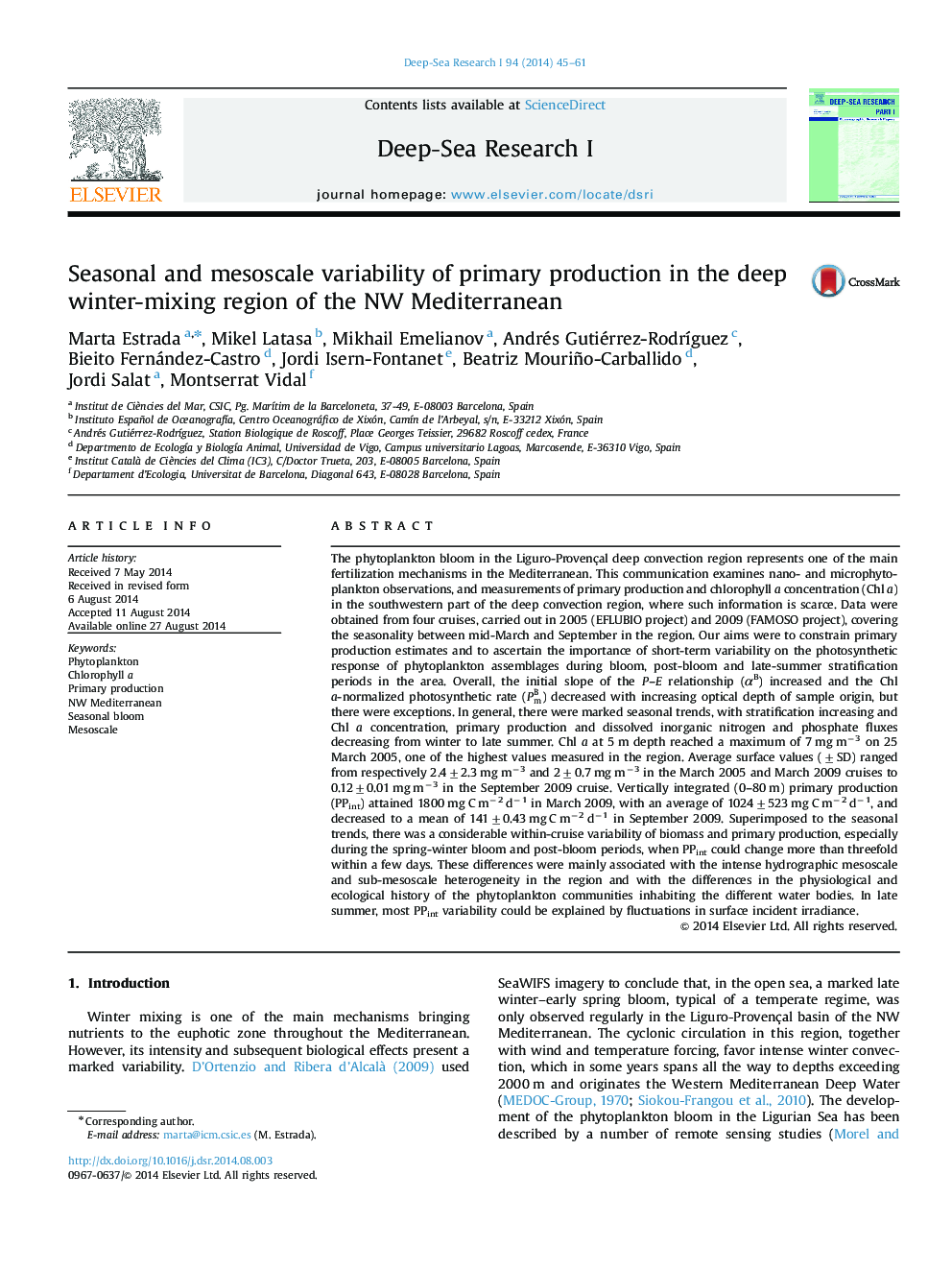| Article ID | Journal | Published Year | Pages | File Type |
|---|---|---|---|---|
| 6383646 | Deep Sea Research Part I: Oceanographic Research Papers | 2014 | 17 Pages |
â¢We examine phytoplankton and primary production (PP) in the open NW Mediterranean.â¢PP reached up to 1800 mg C mâ2 dâ1 during the bloom period of March 2009.â¢Marked short-term variability of PP was associated with hydrographic heterogeneity.â¢Nutrient fluxes and PP were negatively related to stratification at seasonal scale.
The phytoplankton bloom in the Liguro-Provençal deep convection region represents one of the main fertilization mechanisms in the Mediterranean. This communication examines nano- and microphytoplankton observations, and measurements of primary production and chlorophyll a concentration (Chl a) in the southwestern part of the deep convection region, where such information is scarce. Data were obtained from four cruises, carried out in 2005 (EFLUBIO project) and 2009 (FAMOSO project), covering the seasonality between mid-March and September in the region. Our aims were to constrain primary production estimates and to ascertain the importance of short-term variability on the photosynthetic response of phytoplankton assemblages during bloom, post-bloom and late-summer stratification periods in the area. Overall, the initial slope of the P-E relationship (αB) increased and the Chl a-normalized photosynthetic rate (PmB) decreased with increasing optical depth of sample origin, but there were exceptions. In general, there were marked seasonal trends, with stratification increasing and Chl a concentration, primary production and dissolved inorganic nitrogen and phosphate fluxes decreasing from winter to late summer. Chl a at 5 m depth reached a maximum of 7 mg mâ3 on 25 March 2005, one of the highest values measured in the region. Average surface values (±SD) ranged from respectively 2.4±2.3 mg mâ3 and 2±0.7 mg mâ3 in the March 2005 and March 2009 cruises to 0.12±0.01 mg mâ3 in the September 2009 cruise. Vertically integrated (0-80 m) primary production (PPint) attained 1800 mg C mâ2 dâ1 in March 2009, with an average of 1024±523 mg C mâ2 dâ1, and decreased to a mean of 141±0.43 mg C mâ2 dâ1 in September 2009. Superimposed to the seasonal trends, there was a considerable within-cruise variability of biomass and primary production, especially during the spring-winter bloom and post-bloom periods, when PPint could change more than threefold within a few days. These differences were mainly associated with the intense hydrographic mesoscale and sub-mesoscale heterogeneity in the region and with the differences in the physiological and ecological history of the phytoplankton communities inhabiting the different water bodies. In late summer, most PPint variability could be explained by fluctuations in surface incident irradiance.
